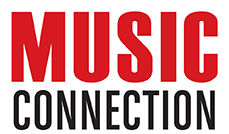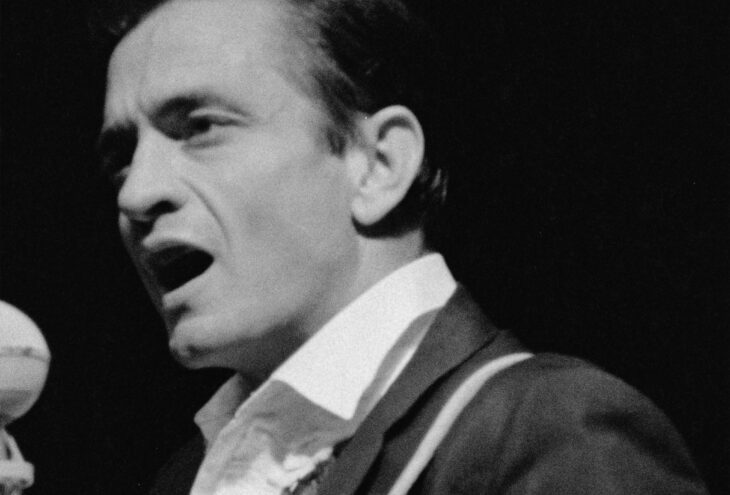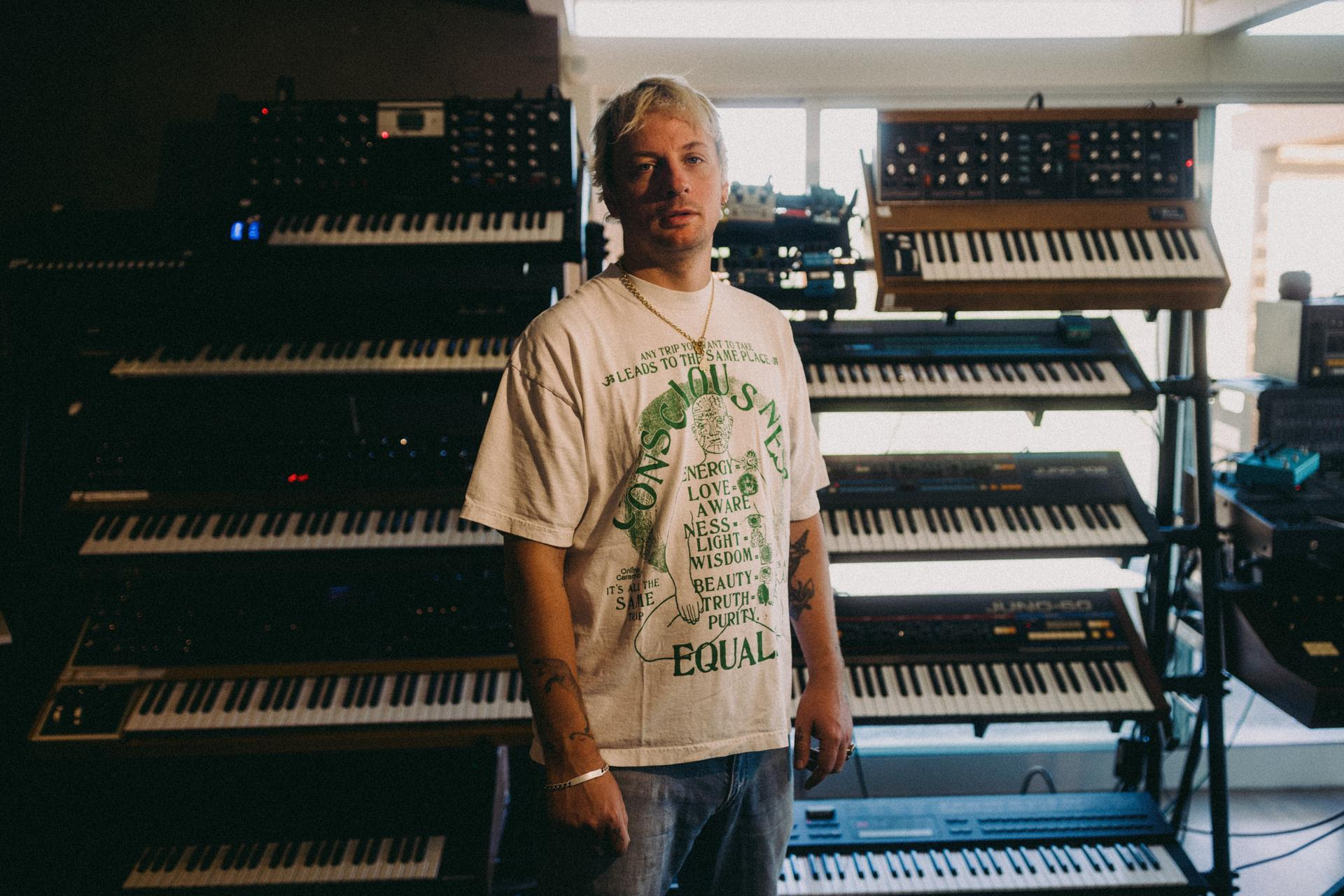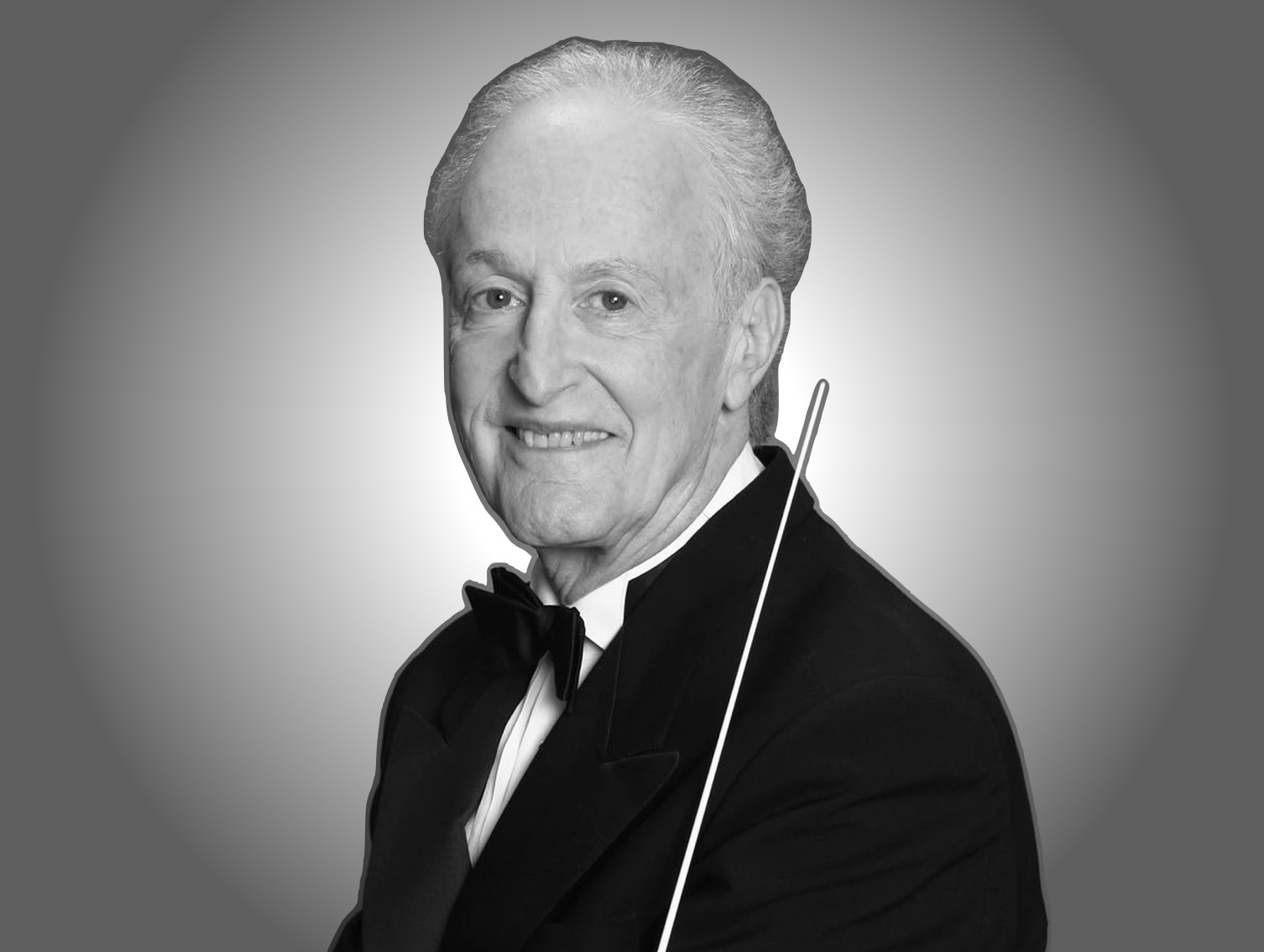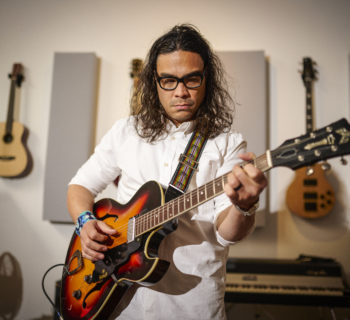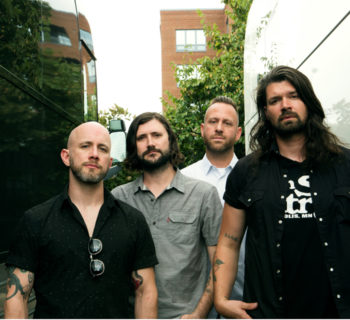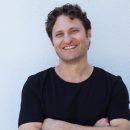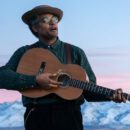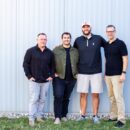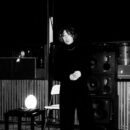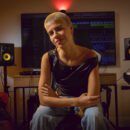Pictured above: Johnny Cash
Director Robert Gordon’s newest film Newport & The Great Folk Dream premiered at the Venice International Film Festival in September 5th.
Owen Gleiberman, chief film critic in his review for Variety in October praised the movie. “Newport & the Great Folk Dream is a rapturous documentary — elegant and transporting, full of scratchy lyrical black-and-white images and performances that have a timeless power.”
Memphis-based Gordon produced the film along with Historic Films Archive owner Joe Lauro and Memphis filmmaker Laura Jean Hocking, who also edited the film. The team has working on and off on Newport & The Great Folk Dream for eight years. The recent critical and box office success of the Bob Dylan biopic A Complete Unknown surely had an impact to get this long-awaited documentary across the finish line.
Gordon and company sifted through pristine 4K transfers culled from 80+ hours of mostly never-seen 16mm negative footage they had access to, initially shot by award winning filmmaker Murray Lerner and his crew at the Newport Folk Festivals between 1963 and 1966.
Portions of those footage performances became the foundation for Lerner’s acclaimed documentary Festival! (1967), now titled Festival, available via The Criterion Collection. Lerner visited the annual Newport Folk Festival to document a thriving, idealistic musical movement as it reached its peak as a popular phenomenon.
Newport & The Great Folk Dream features musical performances by Bob Dylan, Johnny Cash, Joan Baez, Howlin’ Wolf, Mississippi John Hurt, the Lovin' Spoonful, Judy Collins, the Freedom Singers with Bernice Reagon, John Lee Hooker, Pete Seeger, and Richard & Mimi Fariña.
In August 2025, Robert Gordon emailed his director’s statement.
“I admit to a misunderstanding about folk music before I began this film. I was attracted to the element of protest, to the way the songs seem to live in and travel through humanity—an intergenerational connectedness, but I mostly associated the sound of folk music with the sappy side of singer songwriters, complemented by spirited versions of ‘She'll Be Coming 'Round the Mountain.’
“This is a documentary that is made entirely from footage shot in the early 1960s and it could not be more relevant to this 21st century moment. Making Newport & The Great Folk Dream, we were captivated by the emotional depth that this music plumbs, much of which comes from the most unexpected places. And we were determined to convey that feeling on the screen.
“The Newport Folk Festival stage presented a global cultural horizon for the mostly-white college kids and townies that made up this northeastern audience. The diversity of expression at Newport created an event that echoed the music's history: the sharing of songs handed down through time, songs that rouse curiosity, that make listeners uncomfortable, that accompany work or that simply sound great when sung together with others.
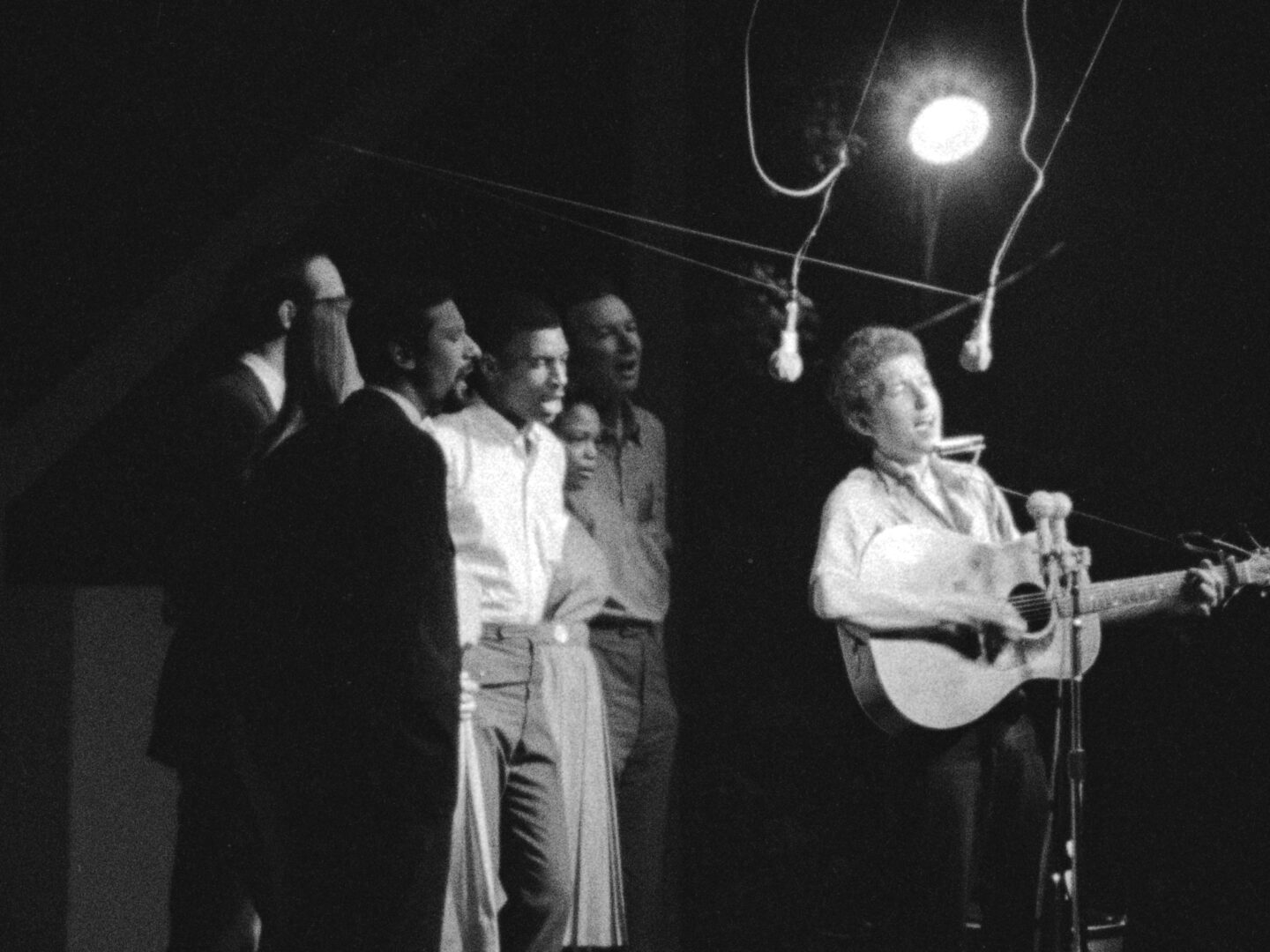
“At the Newport Folk Festival, the new protest songs and the ancient work songs begin to blend, the gap between the concerned youth and the wise elder diminishes, people who would not ordinarily encounter each other have the chance to develop bonds.
“The footage over these three years, 1963-1965, documents how fast youth culture changed, how fast music changed, how fast the nation changed in that short time. The cumulative effect of the casual performances is nearly overwhelming. The timeliness is astonishing. In this movie, we see a movement grow and take hold. We see a philosophical break and the disruption that change brings—and that we know, from our perspective, will be soon mended.
“Also, the music! Bob Dylan goes electric, Phil Ochs leaps to the present, Mississippi John Hurt removes himself from time, and Pete Seeger and Peter, Paul & Mary evolve before our eyes. It was an honor to curate the artists included—and a very difficult task.
“A thrilling musical experience, Newport & The Great Folk Dream is a paean to activism, it embraces the big tent and like the music, this film does not shy from a powerful message: Democracy thrives on diversity.”
Gordon also reflected on his team’s endeavor.
“Working with Murray Lerner's Newport archive was a constant reminder of the force of will it took to capture these hours of great footage. When Murray shows up in 1963 for his first year of filming, he's working by the seat of his pants. He's got different film stocks, he's training camera operators on the spot, he's surrounded by an incredible range of thrilling American music -- and he's busting ass to capture all he can. The result of Murray's hard work between 1963 and 1966 at Newport is a treasure trove of American diversity and history and beautiful music. We had endless respect for Murray's vision and drive.
“From the start, there were a couple ways I wanted to distinguish this film from Festival. For one, I wanted to move chronologically through the 4 years, where Murray's film makes a montage of time. His film was made in the moment for the moment, and one of our movie's fascinating charms is the changes that reveal themselves over the 4 years of filming.
“Today's audience is quite distant from those times, so moving chronologically let us show the changes—in fashion, in music, in attitude—without making a big deal of them. Some of the changes were happening organically and some were the result of organized or semi-organized groups—whether that was SNCC's push for voting rights or the traditionalists' ethos of only acoustic instruments. But in our rapidly changing present times, this movie reminds us that people can create their own changes. The movie makes plain the connection that folk music has long had with activism.
“Another difference between us and the original is our use of 21st century voices who reflect on their experiences at Newport. Everyone we spoke with was there, and with nearly 60 years of reflection, their perspective, their memories, their comments help us today get more out of what we're seeing—and help us understand what went on behind the scenes to make the festival occur.
“In many ways, this is a movie about change and about resistance to change. Folk music adheres to traditions, but any study of folk would reveal that even traditions change. Not all change is good, but not all change is bad either. In the moment, as we see in the footage, change can be very difficult to accept, but as the epilogue makes clear, even difficult changes become accepted.
“There's a difference, of course, between changes in art and changes in politics. When Dylan goes electric, other acoustic artists can do what they want. When fascism takes away democratic freedoms, that's terminating choices and not expanding them.
“This is a film rooted in the past, but it's very much about the present.”
Gordon’s film is a mandatory viewing experience.
Oscar-winning filmmaker Murray Lerner died of kidney failure on September 2, 2017 in New York City at age 90.
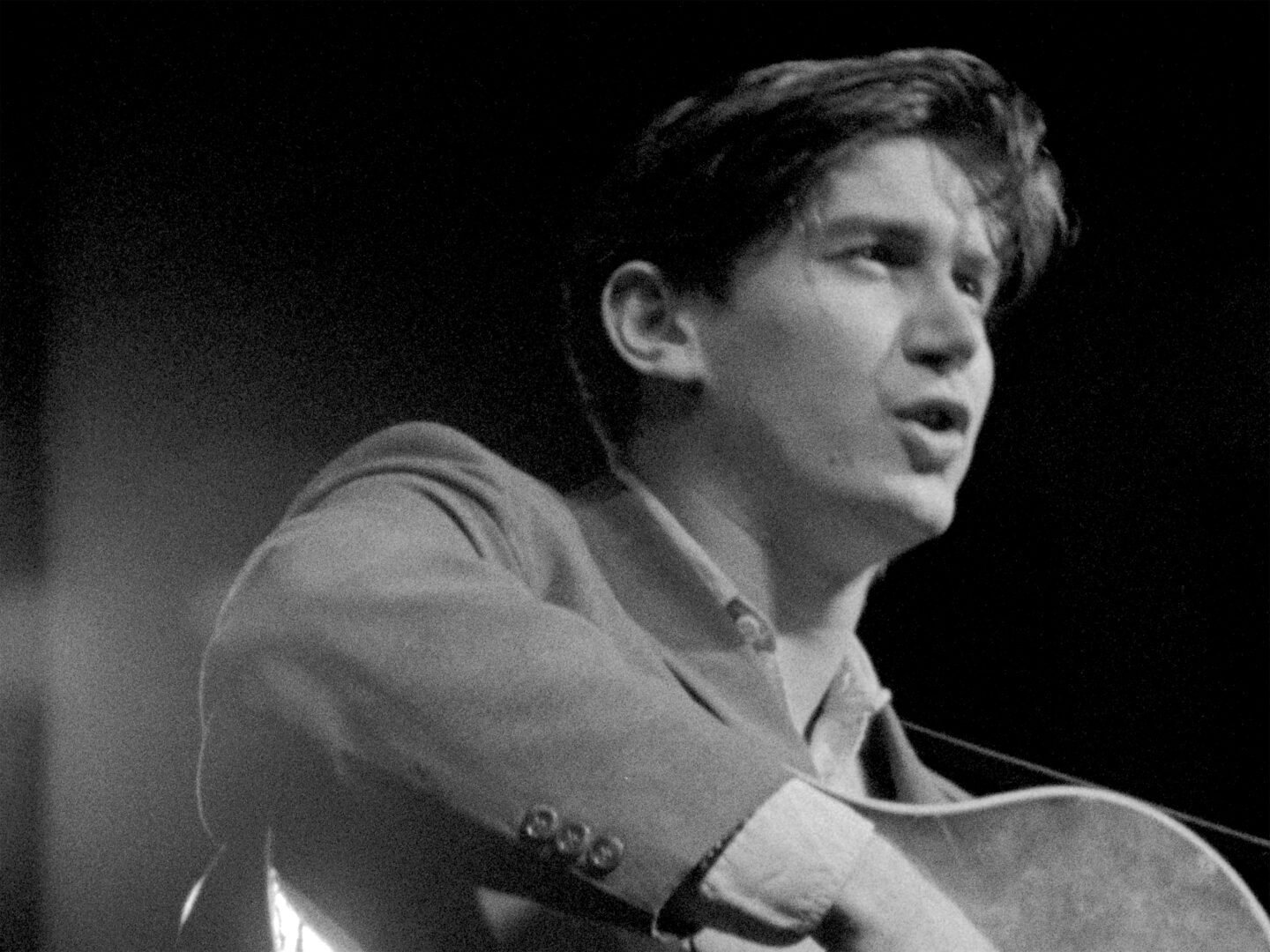
Lerner was born in Philadelphia Pennsylvania on May 8, 1927, raised in New York City, a 1948 graduate of Harvard University and an English major. Murray taught at Yale and also helped establish a film studies program.
After Festival! was released in December 1967, it garnered honors at every major international film festival, including Manheim, San Francisco, Mar del Plata, and Venice.
I screened Festival! at San Diego State University in 1972. Lerner’s office sent a copy to my dormitory room at Zura Hall. I had started with Dr. James L. Wheeler in the school’s Literature Department, the first History of Rock Music class, and the first-ever accredited course in regular curriculum upper division academia. A story in the April 14, 1973 issue of Billboard magazine hailed the department’s academic aim as “the world’s first university level rock studies program.”
Decades later I cited Festival! in my 2017 book, 1967 A Complete Rock Music History of the Summer of Love. Lerner is interviewed in my 2014 book on Leonard Cohen, Everybody Knows.
Lerner was a Harvard Man who loved folk music and literature. Lerner’s hydra-headed cinematic, and distribution trek was a blend of Oscar Micheaux and Homer, four-walled by Samuel Z. Arkoff, James Nicholson and Roger Corman.
My brother Kenneth and I hosted a Q. & A. session with Lerner in Hollywood at the American Cinematheque Egyptian Theater in August 2010 during the Martin Lewis-produced Mods and Rockers film series.
Lerner's filmmaking career began from "industrial cinema." In 1980 he produced and directed the Academy-Award winning From Mao To Mozart: Isaac Stern In China about violin virtuoso Isaac Stern's 1979 goodwill tour of Red China. Lerner’s long-form trend-setting musical documentaries include Isaac Stern, Miles Davis, Bob Dylan, Joni Mitchell, the Moody Blues, Jimi Hendrix, Emerson, Lake & Palmer, the Doors, Jethro Tull, the Who and Leonard Cohen.
Bob Dylan’s 1963-1965 Newport appearances were documented by Lerner in 2007’s The Other Side Of The Mirror-Bob Dylan Live At The Newport Festival 1963-1965 DVD released by Columbia Records and Legacy Recordings.
I interviewed Murray Lerner extensively in 2008, 2010 and 2014.
Q: How did you get the initial Newport job that resulted in 1967's theatrical release of Festival!
A: Through debt and through cajoling people to help. (laughs). There weren't a lot of obstacles to shoot Festival! Once it got rolling then the obstacles were different people associated with the festival who had their own favorites to make a film. I had to overcome that. Anyway, I was determined to get it initially released theatrically. I knew there where the workshops and live performances that were interesting and cinematic. And, music was always my passion for the soundtrack of a film. For the form of a film, when I did Festival! it was the form of the film should also be musical and it should be like experiencing a piece of music in addition to being about music. It seemed to work.
At the Venice Film Festival people in a 1,000 seat theater really got up and applauded. I was alone. I was brought up to think that things should be well exposed, in focus, and you can hear the sound. I had no encounters with Dylan except through Howard Alk. He was great, a marvelous human being. You had to stand up to him with a powerful personality. So, every time I told him to change something, a storm would come over the room that we were in. But I stuck to my ground and that's why he needed a director like me. If you look at the editing of Festival! you will see how sophisticated it is. He'd carry over the tiny sound from one thing to another. It was a three picture two sound movieola and we spent most of our time repairing the film.
Howard called me up and said 'why don't we edit this in Woodstock?’ and I said, ‘No!’ Because I would have a lot of powerful voices around me. ‘How 'bout Martha's Vineyard?’ It was edited for two summers at Martha's Vineyard, then he saw a film I did about Yale, finish that. I had to deal with Albert Grossman for clearances. It took a while to convince Al who was not a control freak. Not the slightest influence in the editing. As time went on each artist was different. Dylan was a buddy of Howard Alk. Howard had their ear and was a friend of Dylan, and had known Grossman from Chicago.
Like in the Dylan Newport DVD, and in Festival! I interview Joan Baez in the car. She did a good one because she discusses what the kids ask. Joan could make fun of Bob on stage because they were close. I think they thought of themselves, and the crowd did as well as the king and queen of Newport. The movie I really wanted to make was about all the tension backstage from the other performers and managers. (laughs).
Q: Festival! was always well received booked at universities and midnight movie screenings.
A: It had more festival showings than any. San Francisco, Argentina, In Italy, Federico Fellini the director gave me his phone number...but I never called him. I always admired him. I was rather shy at the time. At Venice, it sounds crazy, but there were a lot of big wigs there, Pasolini, Antonioni, my film was the most popular of the festival. It was a hit.
Festival! was not just about Dylan. They loved Baez and the rest of it. The whole crowd at Venice got up and danced in the aisles, it was amazing. It was thrilling. It's always been available for schools and screenings and before a Festival! DVD it was on videotape. I was determined not to let it die through mail order and schools. We never made any money. I was a terrible self-promoter and this was before DVD and cable TV.
Q: In Festival! and once again in the Dylan Newport DVD, the live footage of “Maggie's Farm” was powerful and jolting to see in a theater originally, and now on DVD. Plus, Dylan with some members of the Paul Butterfield Blues Band for this effort is always being confrontational. With the camera, daring it to love him, he is being confrontational with the audience.
A: I knew the Butterfield band and had done some industrial film with some of their music. On stage Paul came alive. He's not performing with Dylan together in the 1965 set because Paul mentioned something like it wasn't right to have two stars on stage at the same time. I interviewed Mike Bloomfield in Festival! talking about (Paul) Butterfield. I wanted to show in the movie that this was a movement for white kids and white people to get into the blues. Bloomfield and Butterfield were iconic figures in my mind.
Q: You understood Dylan moving into electric rock 'n' roll from an acoustic setting.
A: I felt that electricity was needed to distribute the music in a wide basis, radio and television. Then, once it happened, the hunger for the feeling that electricity gave people listening to it was more than volume. I think electric music gets into your body, and enters into your nerves quite deeply, and almost puts you into a trance. It's hypnotic. I've always felt this and this was the feeling I had when I watched Bob. And I was excited by it. I not only appreciated the changes, I loved it! I really was mesmerized and hypnotized by “Maggie's Farm” on many levels.
As I was filming it I knew it was a gateway to a new culture in the form of based on the older culture, and I thought this was it. I was mesmerized by electric music, by Paul Butterfield earlier in the thing, and Howlin' Wolf played with a band. But what Dylan did the electricity got into your bones. I was both in the pit and on the stage.
In the DVD we didn't use “Phantom Engineer (It Takes A Lot To Laugh A Train To Cry)” because I didn't think it was up to the standard of “Maggie's Farm” and “Like a Rolling Stone.” To be honest with you. “Stone” is too big a climax to extend it with something not as good.
I knew it was going to be a major breakthrough. It was a mixture of booing, applause and bewilderment. I was intensely involved in the filming so I didn't pay much attention to what the audience was doing. I was hypnotized in a way by the electric music and had to get the shot. And, the interesting thing about “Maggie's Farm” which was a breakthrough musically, but the lyrics were expressing the same kind of idea that he wasn't gonna be a conformist. And in a way, “Maggie' Farm” was a symbol for America working. We're all working on "Maggie's Farm."
Q: What impressed you the most about Dylan as a poet?
A: The words just fell on his music. I knew that when I saw him walk in a room at a party around 1962 for Cynthia Gooding. He came in and pulled out his guitar, played a few songs about New York, packed it up and split. He intrigued me. At Harvard University I majored in English and my main interest was modern American poetry. T.S. Eliot and Ezra Pound and their technique of two opposite symbols creating a third idea. Two different images, the unexpected juxtaposition of two different images for the third idea. Which guided me into filmmaking.
I always use very very long lenses as an adjunct to my photography. I believe in the long shot because I would like the thing to feel musical and not jumpy. I think film is visual music. And it should be, and I believe in editing that way. You can have moments where you are doing quick montage. Most of the time you need to relax.
Q: You and Oscar-winning documentarian D.A. Pennebaker have witnessed and participated in the rock and music documentary world for well nearly 60 years. You’ve done these panel discussions with Pennebaker in front of university film students. I’ve been attending some of these events. Unlike the sixties and seventies, most of the students and hustling filmmakers now in the audience at the Q. and A. sessions want to know about royalty points on the back end of film deal and nothing about film stock, lenses or concepts to creating a story.
A: The best one of those was at the Santa Fe New Mexico Film Festival, a documentary panel. Pennebaker was there. (Ricky) Leacock was there. I was there. It was a seminar type thing where people would question us afterwards, you know. It was all about “how do you get the money?” Not about creative stuff but financial.
One kid said to Pennebaker, “How do you get the money to finance a film?” And without missing a beat he said, “Marry a rich woman.”
(Harvey Kubernik is the author of 20 books, including 2009’s Canyon Of Dreams: The Magic And The Music Of Laurel Canyon, 2014’s Turn Up The Radio! Rock, Pop and Roll In Los Angeles 1956-1972, 2015's Every Body Knows: Leonard Cohen, 2016's Heart of Gold Neil Young and 2017's 1967: A Complete Rock Music History of the Summer of Love. Sterling/Barnes and Noble in 2018 published Harvey and Kenneth Kubernik’s The Story Of The Band: From Big Pink To The Last Waltz. In 2021 the duo wrote Jimi Hendrix: Voodoo Child for Sterling/Barnes and Noble.
Otherworld Cottage Industries in 2020 published Harvey’s Docs That Rock, Music That Matters. His Screen Gems: (Pop Music Documentaries and Rock ‘n’ Roll TV Scenes) is scheduled for 2025 publication.
Harvey wrote the liner notes to CD re-releases of Carole King’s Tapestry, The Essential Carole King, Allen Ginsberg’s Kaddish, Elvis Presley The ’68 Comeback Special, The Ramones’ End of the Century and Big Brother & the Holding Company Captured Live at The Monterey International Pop Festival.
During 2006 Kubernik appeared at the special hearings by The Library of Congress in Hollywood, California, discussing archiving practices and audiotape preservation. In 2017 he lectured at the Rock and Roll Hall of Fame in Cleveland, Ohio, in their Distinguished Speakers Series. In 2023, Harvey spoke at The Grammy Museum in Los Angeles discussing Martin Scorsese's The Last Waltz music documentary.
Kubernik was interviewed for a 2025 documentary, The Sound of Protest on the TVOD Apple TV broadcasting service. https://tv.apple.com › us › movie › the-sound-of-protest. Director Siobhan Logue’s endeavor features Smokey Robinson, Hozier, Skin (Skunk Anansie), Two-Tone's Jerry Dammers, Nina Simone, Angélique Kidjo, Holly Johnson, David McAlmont, Rhiannon Giddens, and more.
Harvey is also an interview subject with Iggy Pop, Bruce Johnston, Johnny Echols, the Bangles' Susanna Hoffs and Victoria Peterson, and the founding members of the Seeds in director Neil Norman’s documentary The Seeds - The Seeds: Pushin' Too Hard now streaming online on Vimeo. This November 2025, a DVD with bonus footage of the documentary is scheduled for release via the GNP Crescendo Company.
